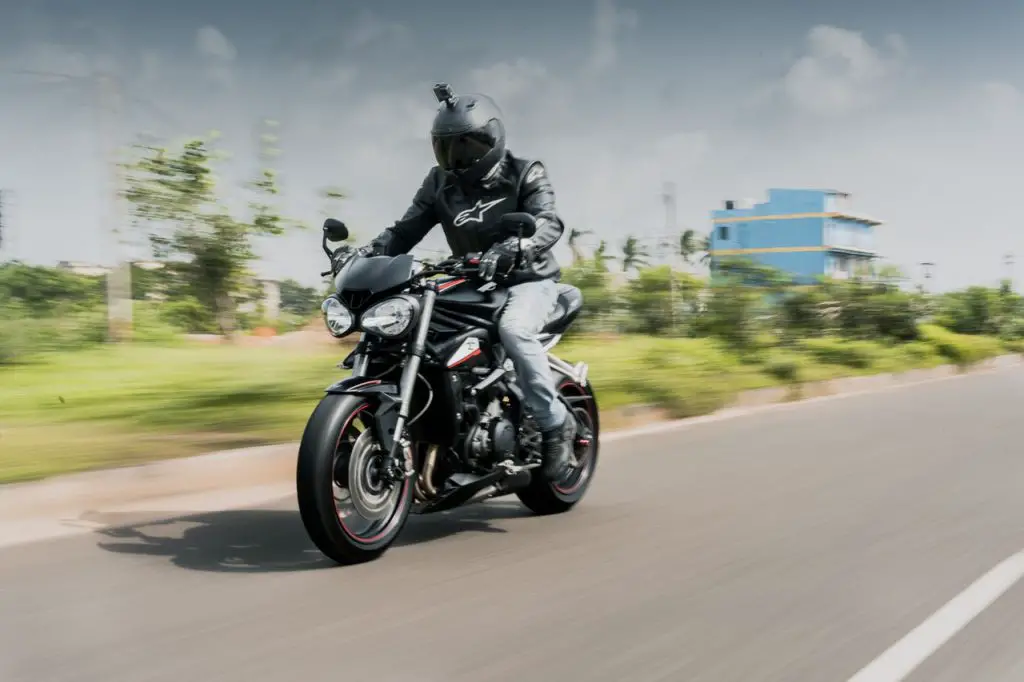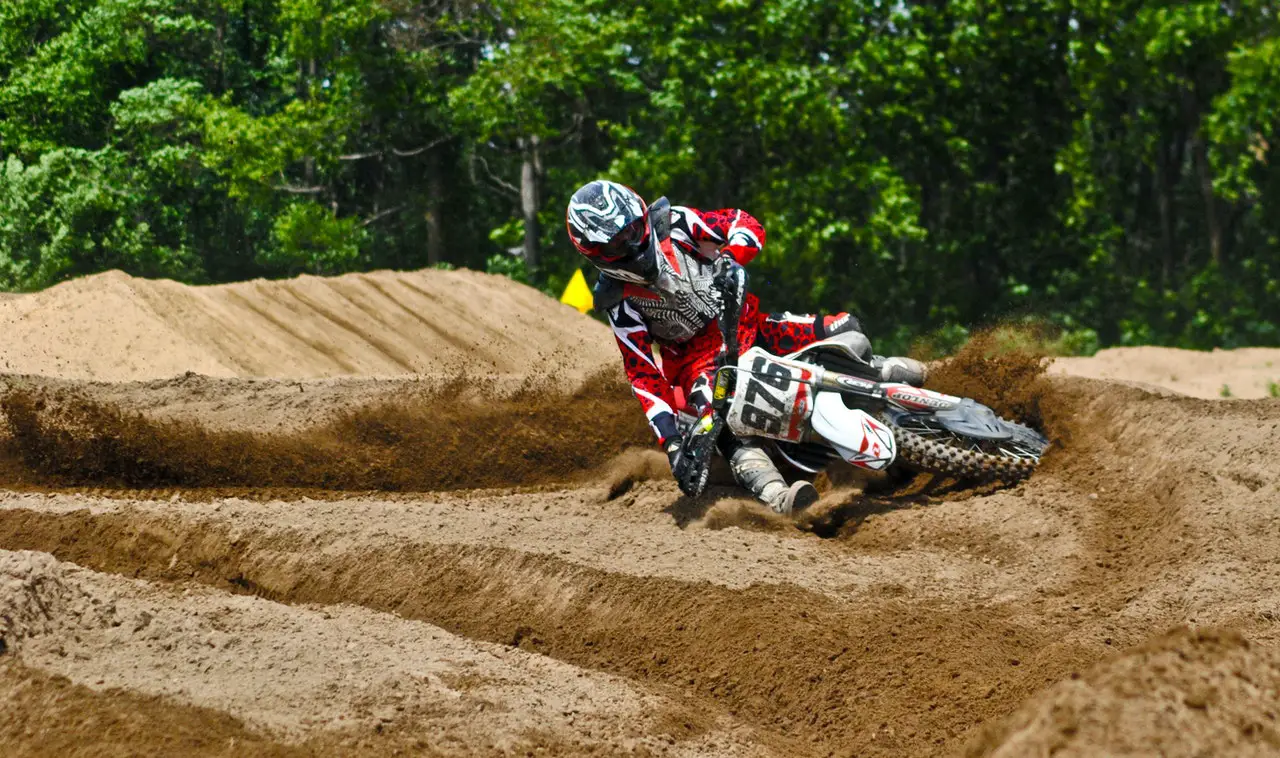Motorcycle helmets are essential to keep yourself safe on the road. They may seem simple on the surface but there are many things that you from harm’s way.
In today’s post, we’ll discuss how helmets work and what sort of features you should look out for. Moreover, we’ll also explain the difference between different types of helmets.
Quick Summary
This post includes the following topics:
- Different motorcycle parts and how they work
- Importance of motorcycle helmets
- Frequently asked questions
Let’s get started.
Motorcycle Helmets and How Do They Work?
It is common knowledge that motorcycle helmets are designed to protect your head from various circumstances like weather, accidents, insects, and many more.
But have you ever wondered how is it able to do so? To answer this question, we must first describe the different parts of a helmet.
Here’s a list of the parts:
- Outer shell
- Inner shell
- Padding
- Visors
- Straps
- Air vents
These are all the parts a helmet is made of. Let’s discuss each part in detail and see what their purpose is.
Outer Shell
The outer shell of a helmet is its most important part. It is responsible for your safety and well-being. Moreover, it is designed to withstand massive external impacts.
Compared to other parts, the outer shell takes about 60% of the total helmet. It covers your entire head, neck, ears, chins, jaws, and nose as well.
You can find a variety of different materials for the outer shell. Mainly, the shell is made from lightweight yet highly-durable materials.
These materials include carbon fiber, fiberglass, kevlar, thermoplastic, and resins. Each material has a different composition and features.
For example; carbon fiber is extremely lightweight and hard to crack or shatter.
Inner Shell
The next part is the inner part of the helmet. This layer is made from hardened plastic to absorb and dissipate any external force on the helmet.
There is a layer of thick styrofoam between the inner and outer shell for enhanced protection.
How thick is this styrofoam layer?
In most cases, the styrofoam layer is about half an inch thick. It is more than enough to keep you safe and sound in case of a bad situation.
Padding
After the inner shell, padding is the next layer of protection. This layer is made up of soft memory foam that also provides comfort and ease of use.
Moreover, it reduces the vibrations inside the helmet which can otherwise cause headaches.
Is that the only purpose of padding?
As it turns out, padding also acts as a grip surface. It makes sure that the helmet doesn’t move unnecessarily and stays on your head.
Visors
The transparent shield in front of the helmet is known as a visor. It protects your eyes from dust, rain, small insects, and even sunlight in some cases.
Another reason why motorcycle helmets have visors is that they provide a clear line of sight. At high speeds, it can be difficult to see as it is very tough to keep your eyes fully open. Visors are important motorcycle accessories.
Are visors moveable?
Visors can also be adjusted up and down to regulate the flow of air inside the helmet. Moreover, it enables you to communicate easily without even taking the helmet off.
Straps
The last layer of protection comes in the form of straps. You can clip them together to completely secure your helmet in one place.
These straps are made from Nylon. They are quite hard to break and cut. Moreover, they are screwed in on each side and can withstand a force-pull of 300 lbs.
Are these straps easy to unlock?
Straps can be easily unlocked. All you have to do is pull/push the clip and it’ll disjoint. You can then safely remove your helmet.
Air Vents
Last but not least, air vents are designed to provide a fresh intake of air. On long rides, helmets can heat up and cause sweating.
To mitigate this problem, air vents circulate fresh and cool air all around the helmet. Moreover, vents help with breathing as well.
Do air vents have filters?
We must mention that these vents also have a fine mesh inside them. It acts as a filter to keep the dust outside.
Each part works in conjunction with others to provide multiple layers of protection. However, there is another factor that impacts how a helmet works. Let’s check it out.
The Shape of a Motorcycle Helmet
You might have noticed that motorcycle helmets come in different shapes. Some are round while on the other hand, some are designed with edges and curves.
The reason behind these shapes is aerodynamics. When you move at high speeds, it is natural to feel the air resistance.
Helmets are designed to minimize this resistance with the help of different shapes. For example; the round shape redirects air around and over the helmet. This greatly reduces the air resistance and the fatigue you feel because of it.
What about shapes with curves and edges?
Helmets with sharp edges are designed for sports use. These curves turn the incoming air into downforce for just a little boost in your speed.

Importance of Motorcycle Helmets
Experts around the world highly recommend the use of helmets even for a short drive. This is because, in an unlikely event, you can rely on it for safety.
Direct impacts on your head can be dangerous and fatal in some circumstances. Helmets are a great tool to prevent any major injury.
What are other benefits of motorcycle helmets?
Besides the safety element, helmets are a great way to make yourself look cool. You can choose different colors and even customize them for a unique look.
Moreover, if you work in a professional space, it’ll keep your hairstyle as you want it to be. We all know how much it matters to make yourself look presentable.
Find out Who invented the Helmets for Motorcycles by clicking here.
Frequently Asked Questions (FAQs)
Let’s check out some commonly asked questions from around the web.
Is it important to buy a helmet with straps?
Helmet straps are absolutely necessary. The straps make sure that your helmet doesn’t move from its set position. Otherwise, it can be quite difficult for you to adjust the helmet while driving the motorcycle.
What is the best material for motorcycle helmets?
Carbon fiber and kevlar helmets have gained a lot of popularity because of their lightweight and durable structure. You can easily wear these helmets for extended periods without any strain on your neck or skull.
What’s the best shape for motorcycle helmets?
Round-shaped motorcycle helmets are suitable for day-to-day use. You can wear them on and off-road as well. On the other hand, modular helmets are a better fit for sports and off-road use.
Wrapping Things Up…
This brings us to the finish line of our guide on how motorcycle helmets work. We hope this information proves to be useful for you.
There are many parts that make up a motorcycle helmet. Each part has its own unique purpose and without it, you’ll be left with a tin can on your head. Moreover, every part provides an extra layer of protection for your head.
Do let us know what sort of helmet you use on a day-to-day basis. CLICK HERE for more.

